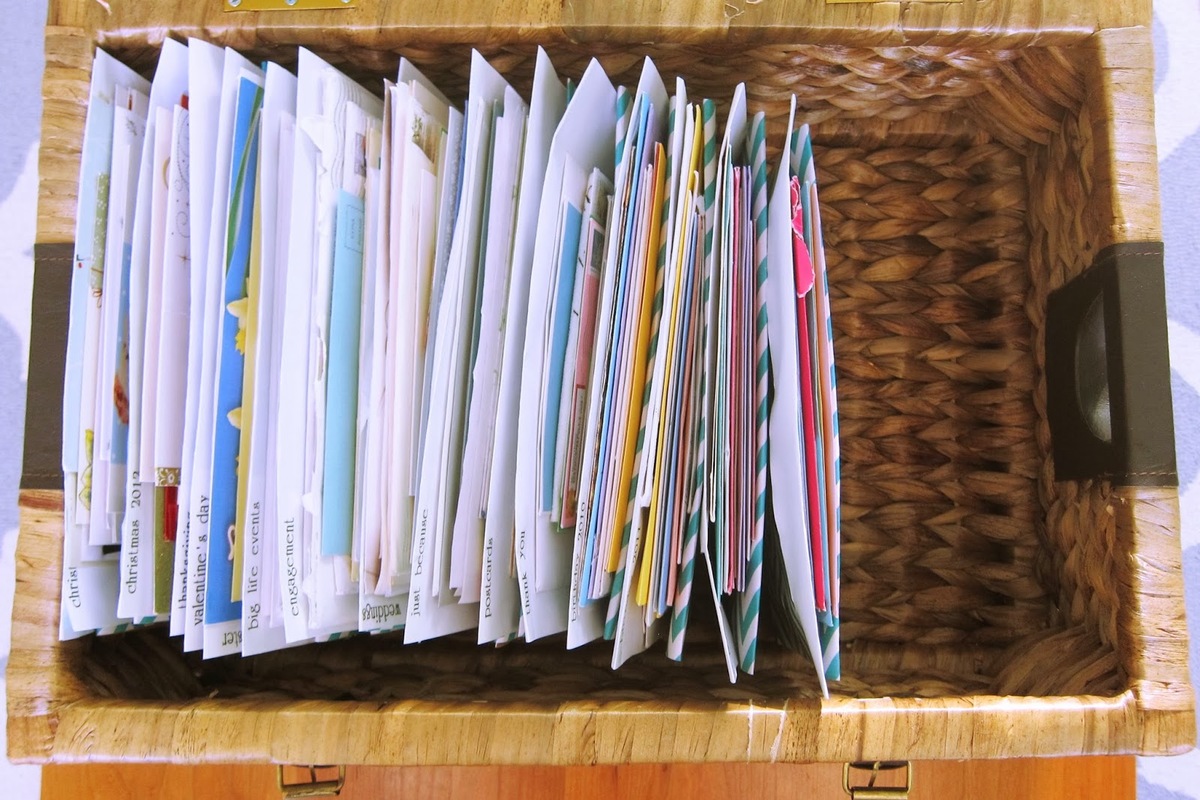

Articles
How To Store Old Cards
Modified: January 18, 2024
Learn how to store old cards with our informative articles. Preserve your collection and keep it in pristine condition.
(Many of the links in this article redirect to a specific reviewed product. Your purchase of these products through affiliate links helps to generate commission for Storables.com, at no extra cost. Learn more)
Introduction
Welcome to our comprehensive guide on how to store old cards. Whether you have a collection of baseball cards, trading cards, or even vintage playing cards, proper storage is essential to preserve their value and longevity. By utilizing the right storage options and techniques, you can protect your cards from damage and deterioration over time.
Old cards hold sentimental value for many collectors, and there’s nothing worse than finding out that your prized possession has been damaged due to improper storage. This guide aims to provide you with practical tips and techniques to ensure the longevity of your card collection.
Before we dive into the specifics of storing old cards, it’s important to note that the techniques discussed here can be applied to various card types. Whether you collect sports cards, trading cards, or even vintage playing cards, the principles of proper card storage remain the same.
So, let’s get started on how to choose the right storage options for your old cards and how to maintain them for years to come.
Key Takeaways:
- Preserve the value and longevity of your old card collection by choosing the right storage options, cleaning and preparing the cards, and organizing them effectively. Implementing maintenance practices ensures the enjoyment of your cherished collection for years to come.
- Utilize card sleeves, binders, or card storage boxes made from archival-quality materials to protect and organize your old cards. Maintain the storage area by controlling temperature and humidity, preventing dust accumulation, and regularly inspecting the storage containers to ensure the safety and preservation of your cards.
Read more: How To Store Old Greeting Cards
Choosing the Right Storage Options
When it comes to storing old cards, the first step is to choose the right storage options. The goal is to provide a safe and protective environment that minimizes the risk of damage from external factors.
One of the most popular and effective storage options for old cards is the use of sleeves. Card sleeves are transparent protective covers that fit snugly around individual cards. These sleeves not only safeguard your cards from dirt, moisture, and fingerprints but also help prevent any bending or creasing. It’s important to choose sleeves made from archival-quality materials that are free from acids and PVC. Look for sleeves that are labeled as “acid-free” or “archival-safe.”
If you have a larger collection or want to keep your cards organized in a compact manner, using binders can be an excellent choice. Binders with card sleeves allow you to store multiple cards neatly in one place. Opt for binders made with sturdy materials to ensure durability. It’s also advisable to use binder pages specifically designed for card storage, with built-in pockets or sleeves that fit your card sizes.
For collectors with a substantial card collection, investing in card storage boxes may be the best option. These boxes come in various sizes and are designed to hold a large number of cards securely. Look for boxes made from acid-free and archival-safe materials. It’s also a good idea to choose boxes that provide a tight seal to protect against dust, moisture, and other contaminants.
When considering the storage options, think about your specific needs and the size and type of your collection. Take into account practicality, accessibility, and the level of protection each option offers. If you have rare or valuable cards, it’s worth investing in high-quality storage solutions to maintain their condition and value.
In the next sections, we will delve into the steps for cleaning and preparing your old cards before storing them, as well as techniques for organizing and utilizing different storage options effectively.
Cleaning and Preparing the Cards
Before storing your old cards, it’s important to clean and prepare them properly. This step is crucial to remove any dirt, dust, or debris that may have accumulated over time. Here are some guidelines to follow:
- Gently dust off the cards: Use a soft brush or a microfiber cloth to remove any dust or loose particles from the surface of the cards. Avoid using harsh chemicals or abrasive materials that can potentially damage the cards.
- Remove sticky residue: If you notice any sticky residue, such as tape or adhesive, on the cards, it’s important to remove it carefully. Use a mild adhesive remover or rubbing alcohol applied to a cotton swab to gently dab and lift off the residue. Take caution to apply the solution sparingly and avoid contact with the card surface.
- Address stains or marks: If your cards have stains or marks that can’t be removed with a gentle dusting, you can try using a specialized card cleaning solution. These solutions are designed to clean cards without causing damage. Apply a small amount of the cleaning solution to a soft cloth and gently wipe the affected areas. Always test the solution on a less visible part of the card first to ensure it doesn’t cause any damage.
- Allow the cards to dry completely: After cleaning, ensure that the cards are completely dry before proceeding to store them. Lay them flat on a clean, dry surface and give them sufficient time to air dry naturally. Avoid exposing the cards to direct sunlight or using any artificial heating methods to speed up the drying process, as this can cause warping or fading.
- Avoid handling the cards excessively: While cleaning and preparing the cards, minimize touching them directly with your fingers as much as possible. The oils and moisture on your hands can transfer to the cards and potentially cause damage over time. If you must handle the cards, consider wearing clean, lint-free gloves to protect them from any contamination.
By following these cleaning and preparation steps, you can ensure that your old cards are ready for storage in a clean and pristine condition. In the next section, we will discuss techniques for organizing and categorizing your card collection before placing them into storage.
Organizing the Cards
Organizing your old cards is an essential step in maintaining a well-structured and easily accessible collection. When cards are organized, it becomes easier to find specific items, create thematic sections, and keep track of the cards you have. Here are some tips for organizing your cards:
- Sort by category or type: Start by sorting your cards into categories or types. For example, if you have sports cards, you can sort them by sport, team, or player. If your collection includes trading cards from different franchises, consider sorting them by the franchise or series. Depending on your preference, you can choose any criteria that make sense to you and will allow for easy retrieval.
- Utilize dividers or index cards: To keep your cards organized within storage options like binders or storage boxes, consider using dividers or index cards. These can help separate different sections or categories within the same storage container. Label the dividers or index cards clearly to make it easier to identify different sections at a glance.
- Keep a catalog or inventory list: Maintaining a catalog or inventory list can be incredibly useful for larger collections or when you have cards stored in multiple locations. This catalog can include details like card names, card numbers, condition, and storage location. Keeping an updated list ensures that you know exactly what cards you have and where they are stored, making it easier to manage your collection and find specific cards when needed.
- Consider using card sleeves with labeling options: Some card sleeves come with built-in labeling slots or allow you to insert labels directly into the sleeves. This can be a helpful way to organize your cards by providing quick reference information on each sleeve. You can include details like player names, card numbers, or any other relevant information you want to see without having to remove the card from the sleeve.
- Create a system that works for you: Everyone has their own preferred method of organizing, so find a system that works best for you. Experiment with different approaches until you find one that suits your needs and allows for easy navigation and retrieval. The key is to establish a structure that is logical and intuitive to you, making it effortless to locate specific cards or sections of your collection.
By organizing your cards effectively, you can maximize the enjoyment of your collection, whether you’re a casual collector or a passionate enthusiast. In the following sections, we will explore different storage options, including the use of sleeves, binders, and card storage boxes, to keep your organized collection safe and protected.
Storing Cards with Sleeves
Using card sleeves is a popular and effective method for storing and protecting individual cards. Sleeves provide a transparent and protective layer that shields the cards from dirt, moisture, and fingerprints. Here are some tips for storing your cards with sleeves:
- Choose the right sleeve size: It’s important to select the correct sleeve size that fits your cards snugly. Sleeves that are too small will bend or warp the cards, while sleeves that are too large will not provide sufficient protection. Most card sleeves come in standard sizes to accommodate various card dimensions. It’s recommended to measure your cards and choose the appropriate sleeve size accordingly.
- Use archival-quality sleeves: Opt for card sleeves made from archival-quality materials that are acid-free and PVC-free. These materials are free from chemicals that can potentially cause damage to your cards over time. Look for sleeves labeled as “archival-safe” or “acid-free” to ensure the long-term preservation of your collection.
- Insert the cards carefully: When inserting your cards into the sleeves, handle them with clean, dry hands or wear gloves to prevent any oil or moisture transfer. Gently slide the cards into the sleeve, ensuring that they are fully inserted and centered within the sleeve. Be cautious not to force the cards into the sleeves, as this can cause bending or damage to the cards.
- Consider using additional protective measures: While sleeves offer a good level of protection, you may want to consider additional protective measures, especially for valuable or fragile cards. For instance, you can use top-loaders, which are rigid plastic cases that provide extra sturdiness and protection. These cases are designed to fit the sleeved card securely and offer increased resistance against bending or impacts.
- Organize the sleeved cards in binders or storage boxes: Once your cards are sleeved, you can organize them in binders or storage boxes for convenient and secure storage. Place the sleeved cards in the pockets or slots provided by the binder pages, ensuring that they are arranged in an organized manner according to your preferred system. Alternatively, you can stack the sleeved cards vertically in card storage boxes, with dividers or index cards to separate different sections as needed.
- Store the binders or boxes in a cool, dry, and stable environment: To maintain the quality of your sleeved cards, it’s important to store the binders or boxes in a suitable environment. Avoid extreme temperatures, high humidity, or exposure to direct sunlight, as these factors can cause damage to the cards. It’s best to store the cards in a cool, dry, and stable location, such as a closet or shelf.
Storing your cards with sleeves is an excellent way to preserve their condition and prevent damage. In the next section, we will explore the use of binders as another storage option for organizing and protecting your card collection.
Store old cards in acid-free boxes or albums to prevent yellowing and deterioration. Keep them in a cool, dry place away from direct sunlight to maintain their condition.
Read more: How To Store Card Games
Storing Cards in Binders
Using binders is a practical and efficient method for storing and organizing your card collection. Binders allow you to keep your cards neatly arranged in individual sleeves, making it easy to browse through and locate specific cards. Here are some tips for storing cards in binders:
- Choose a sturdy binder: Opt for a binder made from durable materials to ensure longevity. A binder with a hardcover or reinforced edges provides extra protection for your cards. It’s also advisable to choose a binder that is designed specifically for card storage and has rings of appropriate size to hold the pages securely.
- Select appropriate binder pages: The binder pages are essential for holding the card sleeves. There are various types of binder pages available, such as nine-pocket pages, four-pocket pages, or even custom configurations. Evaluate your collection and select the type of page that best suits your needs. Nine-pocket pages are the most common and can accommodate standard-sized cards.
- Insert cards into sleeves and place them in the binder pages: Slide the sleeved cards into the pockets of the binder pages, ensuring that they fit securely. For added organization, consider arranging the cards in a logical order, whether it’s by sport, team, player, or any other criteria that works for your collection. Label the pages or use dividers to separate different sections for quick and easy reference.
- Don’t overcrowd the pages: Avoid overstuffing the pockets with cards, as this can lead to bending or warping. Ideally, leave some space between cards to ensure they can be easily removed without any damage. If necessary, use additional binder pages to accommodate your growing collection.
- Protect the binder from external factors: Keep the binder in a clean and dry environment to prevent moisture or dust from damaging the cards. Avoid exposing the binder to direct sunlight, extreme temperature fluctuations, or high humidity. It’s also a good idea to store the binder in an upright position to prevent the pages from bending or sagging over time.
- Regularly assess and update the binder: Periodically review your collection and make necessary adjustments to the organization of the cards. As your collection grows, you may need to add more pages or reorganize the cards to maintain an efficient and well-structured system. Keeping your binder up to date ensures that you can easily find and enjoy your cards.
Storing cards in binders offers a convenient and visually pleasing way to display and protect your collection. The use of card sleeves and binder pages allows for easy organization and retrieval of individual cards. In the next section, we will explore the option of using card storage boxes for storing larger card collections or bulk storage needs.
Using Card Storage Boxes
Card storage boxes are an excellent option for storing larger card collections or when you have bulk storage needs. These boxes provide a secure and organized solution to keep your cards safe from external elements. Here are some tips for using card storage boxes:
- Select a suitable card storage box: Choose a card storage box made from high-quality materials that are acid-free and archival-safe. Look for boxes specifically designed for card storage, as they often come with features like reinforced corners and dividers to help keep your cards organized and protected. Consider the size of your collection and select a box that can accommodate your cards comfortably.
- Categorize and label the cards: Before placing your cards into the storage box, categorize them according to your preferred system and label each category. This could be by sport, team, player, or any other classification that makes sense to you. Labeling the categories helps you quickly locate specific groups of cards without the need to search through the entire collection.
- Sleeve the cards for added protection: While not necessary, sleeving your cards before placing them into the storage box provides an extra layer of protection. Card sleeves help shield your cards from dirt, moisture, and fingerprints. If you choose to sleeve your cards, ensure the sleeves fit snugly and don’t overcrowd the box.
- Utilize dividers or index cards: To maintain organization within the storage box, use dividers or index cards to separate different categories or sections. This makes it easier to find specific groups of cards and minimizes the risk of mix-ups or confusion. Label the dividers or index cards clearly for quick reference.
- Consider alphabetical or numerical organization: Another effective way to organize cards within the storage box is to arrange them alphabetically or numerically. This method is particularly useful for larger collections with a wide range of cards. It simplifies the process of finding specific cards and allows for efficient browsing of the collection.
- Store the box in a suitable environment: To ensure the longevity of your cards, store the card storage box in a clean, dry, and stable environment. Avoid exposing the box to extreme temperatures, high humidity, or direct sunlight. A cool and dry area, such as a closet or storage room, is ideal for maintaining the quality of your cards.
- Regularly assess and update the storage arrangement: As your collection grows or changes, periodically evaluate and update the organization within the storage box. This includes adjusting dividers, adding new categories, or reorganizing the cards to maintain a well-structured and easily accessible collection.
Using card storage boxes allows you to store a large number of cards in a compact and secure manner. By implementing proper organization and labeling techniques, you can easily manage and access your card collection. In the next section, we will discuss some essential tips for maintaining the storage area to ensure the longevity of your cards.
Maintaining the Storage Area
Proper maintenance of the storage area is crucial for preserving the condition and value of your cards. It’s important to create an environment that minimizes the risk of exposure to damaging factors. Here are some essential tips for maintaining the storage area:
- Control temperature and humidity: Fluctuations in temperature and high humidity can lead to warping, mold growth, and deterioration of your cards. Aim to maintain a stable temperature and humidity level in the storage area. Avoid storing cards in areas prone to extreme temperature changes or high levels of moisture, such as basements or attics. Investing in a dehumidifier or temperature-controlled storage solution may be necessary for climates with significant temperature and humidity variations.
- Keep away from direct sunlight: Sunlight can cause fading, discoloration, and damage to your cards over time. Ensure the storage area is away from direct sunlight by placing it in a shaded part of the room or using curtains or blinds to block out the sun’s rays. If displaying cards in binders or on shelves, consider using UV protective sleeves or covers to further shield them from sunlight exposure.
- Prevent dust accumulation: Dust can accumulate on cards and affect their appearance and condition. Dust the storage area regularly using a soft, lint-free cloth or a soft brush. Avoid using cleaning solutions directly on the cards or sleeves, as they may cause damage. Instead, gently wipe the surfaces of storage containers and shelves to keep them clean and dust-free.
- Check for pests: Pests like insects or rodents can damage your cards by chewing on them or leaving behind droppings. Regularly inspect the storage area for signs of infestation, such as chewed corners or droppings. If you suspect any pests, take appropriate measures to eliminate them, such as using traps or calling professional pest control services. Additionally, consider adding deterrents like mothballs or cedar chips to ward off insects.
- Avoid overcrowding: Overcrowding cards in storage containers can lead to bending, creasing, or damage. Allow sufficient space between cards, whether they are stored in sleeves in binders or in boxes. This helps ensure easy accessibility and minimizes the risk of accidental damage when removing or inserting cards.
- Regularly inspect and maintain storage containers: Periodically check the condition of your storage containers, such as binders or card storage boxes. Look for any signs of wear, damage, or deterioration. If any containers show signs of weakness or wear, consider replacing them to ensure the continued protection of your cards.
- Update inventory and documentation: Keep your catalog or inventory list up to date with any changes or additions to your card collection. This helps you stay organized and provides a quick reference tool for locating specific cards. Also, consider taking photographs or creating a visual record of your valuable or rare cards for insurance purposes.
By following these maintenance tips, you can create an optimal storage environment for your cards, minimizing the risk of damage and ensuring their long-term preservation. In the next section, we will address some frequently asked questions regarding card storage and collection maintenance.
Frequently Asked Questions
Here are answers to some common questions regarding card storage and collection maintenance:
- How do I determine the value of my card collection?
The value of a card collection can vary depending on factors such as card rarity, condition, demand, and current market trends. Researching recent sales of similar cards and consulting price guides or reputable collectors’ websites can help you get an idea of the value. For more accurate and precise information, you may consider reaching out to professional card appraisers or collectors who specialize in the specific type of cards you have. - Do I need special insurance for my valuable card collection?
Depending on the value of your card collection, you might consider contacting your insurance provider to inquire about special insurance coverage. Some homeowner’s insurance policies may provide coverage for collectibles, but it’s important to check whether there are specific limits or exclusions. For higher-value collections, you may need to seek out additional insurance options tailored to collectibles or consider obtaining a separate collectibles insurance policy. - Can I display my cards without risking damage?
Yes, you can display your cards without risking damage by using protective displays. Display cases, framed displays, or specially designed card stands can keep your cards visible while ensuring they are protected. Make sure to choose UV-protective displays to shield your cards from harmful sunlight. It’s also important to regularly dust the displays to prevent dust from accumulating on the cards. - How often should I check my card collection for any signs of damage or deterioration?
It’s a good practice to inspect your card collection at regular intervals, at least once every few months or whenever you handle the cards for any reason. Look for signs of creasing, warping, discoloration, or any other signs of damage. Check the storage containers for any wear or deterioration as well. Catching potential issues early allows you to address them promptly and prevent further damage. - Should I keep my card collection in a safe?
Keeping your card collection in a safe can offer an additional layer of security. However, it’s important to consider the specific characteristics of your cards and the level of protection they require. Ensure that the safe provides a stable climate with low humidity and safeguards against moisture. If your collection contains valuable or rare cards, consult with professionals to determine the best security measures for your specific situation. - Can I store different types of cards together?
It’s generally safe to store different types of cards together, such as sports cards, trading cards, or playing cards, as long as they are stored in appropriate sleeves or protective enclosures. However, it’s a good idea to separate and categorize them within storage containers for easier organization and retrieval. This will also prevent any potential damage that could occur if cards of different types are rubbed or pressed against each other.
These answers should provide clarity on common concerns regarding card storage and collection maintenance. It’s important to remember that individual circumstances may differ, so always consider the uniqueness of your collection and seek professional advice when necessary.
Read more: How To Store Gift Cards
Conclusion
Proper storage and maintenance of old cards are essential for preserving their value, condition, and sentimental significance. By choosing the right storage options, cleaning and preparing the cards, organizing them effectively, and implementing maintenance practices, you can ensure the longevity and enjoyment of your card collection.
When selecting storage options, consider factors such as the type and size of your collection, accessibility, and protection. Whether you choose card sleeves, binders, or card storage boxes, make sure they are made from archival-quality materials and provide a secure environment for your cards.
Cleaning and preparing your cards before storage is crucial to remove dirt, residue, and stains. Use gentle cleaning techniques and allow the cards to dry completely before handling or placing them in storage. Organize your cards in a system that suits your preferences, whether it’s categorizing by sport, team, player, or any other criteria that works for you.
Storing cards with sleeves offers individual protection and easy organization, while binders provide a convenient way to browse and locate specific cards. Card storage boxes are ideal for larger collections or bulk storage needs. Whichever option you choose, maintaining the storage area is vital. Control temperature and humidity, prevent dust accumulation, and regularly inspect the storage containers to ensure the safety and preservation of your cards.
Lastly, by addressing frequently asked questions, we have provided valuable insights into card collection value, insurance, display options, inspection frequency, and storage compatibility.
Remember, each card collection is unique, and it’s essential to take into consideration the condition, rarity, and sentimental value of your cards. With proper storage and maintenance, you can enjoy your old cards for many years to come, while also protecting their value and preserving the joy they bring. So go ahead, implement these techniques, and cherish your cherished collection of old cards!
Frequently Asked Questions about How To Store Old Cards
Was this page helpful?
At Storables.com, we guarantee accurate and reliable information. Our content, validated by Expert Board Contributors, is crafted following stringent Editorial Policies. We're committed to providing you with well-researched, expert-backed insights for all your informational needs.
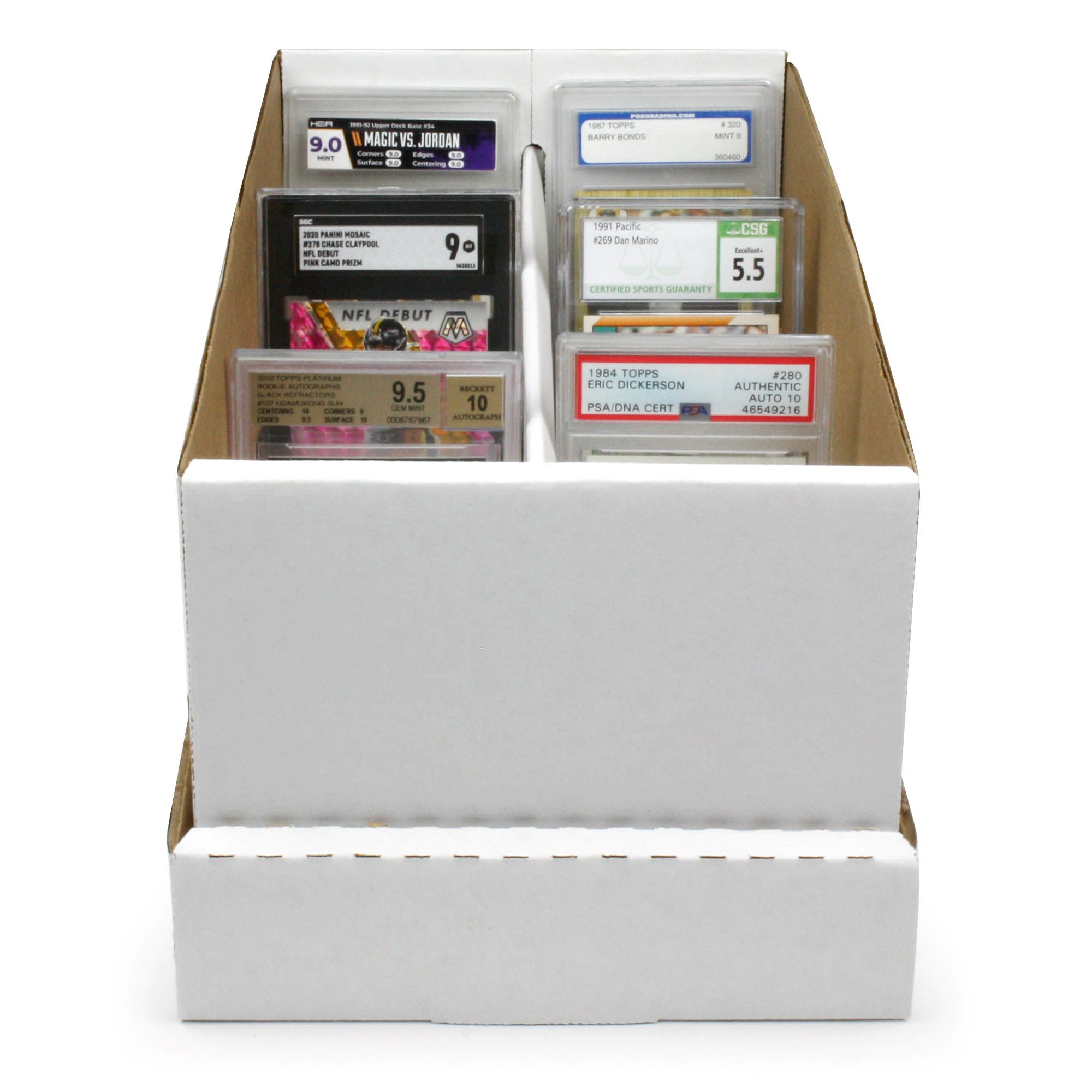
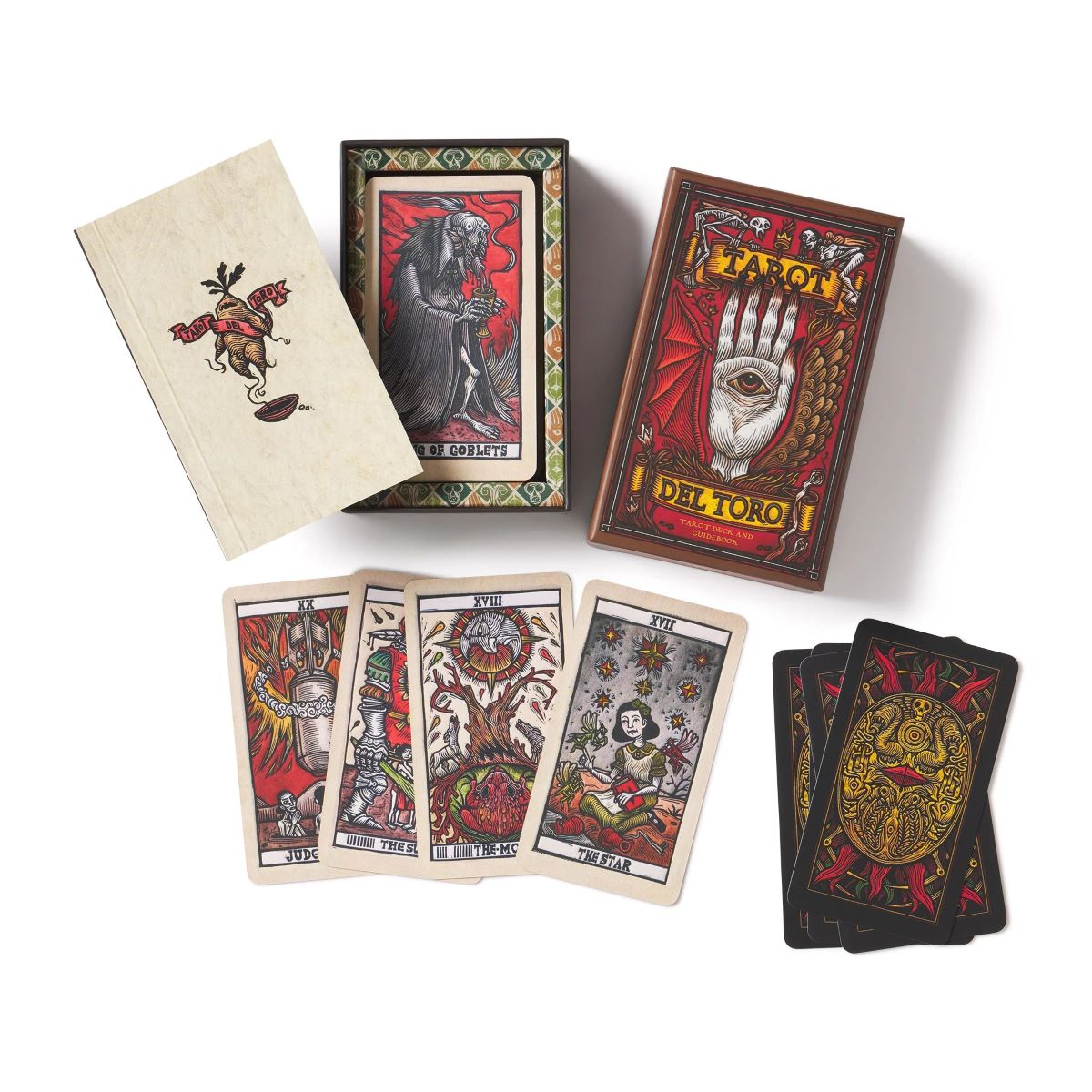
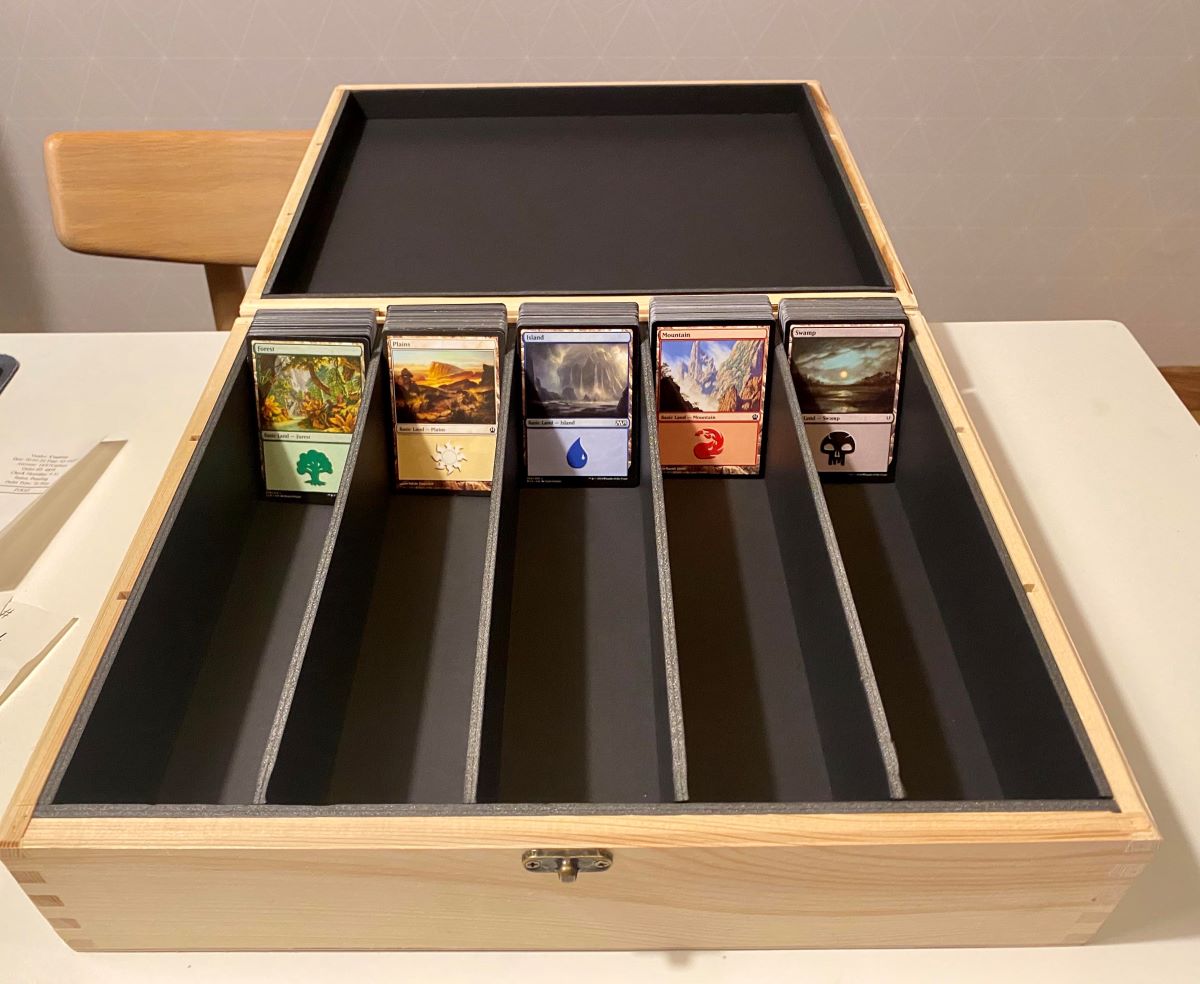
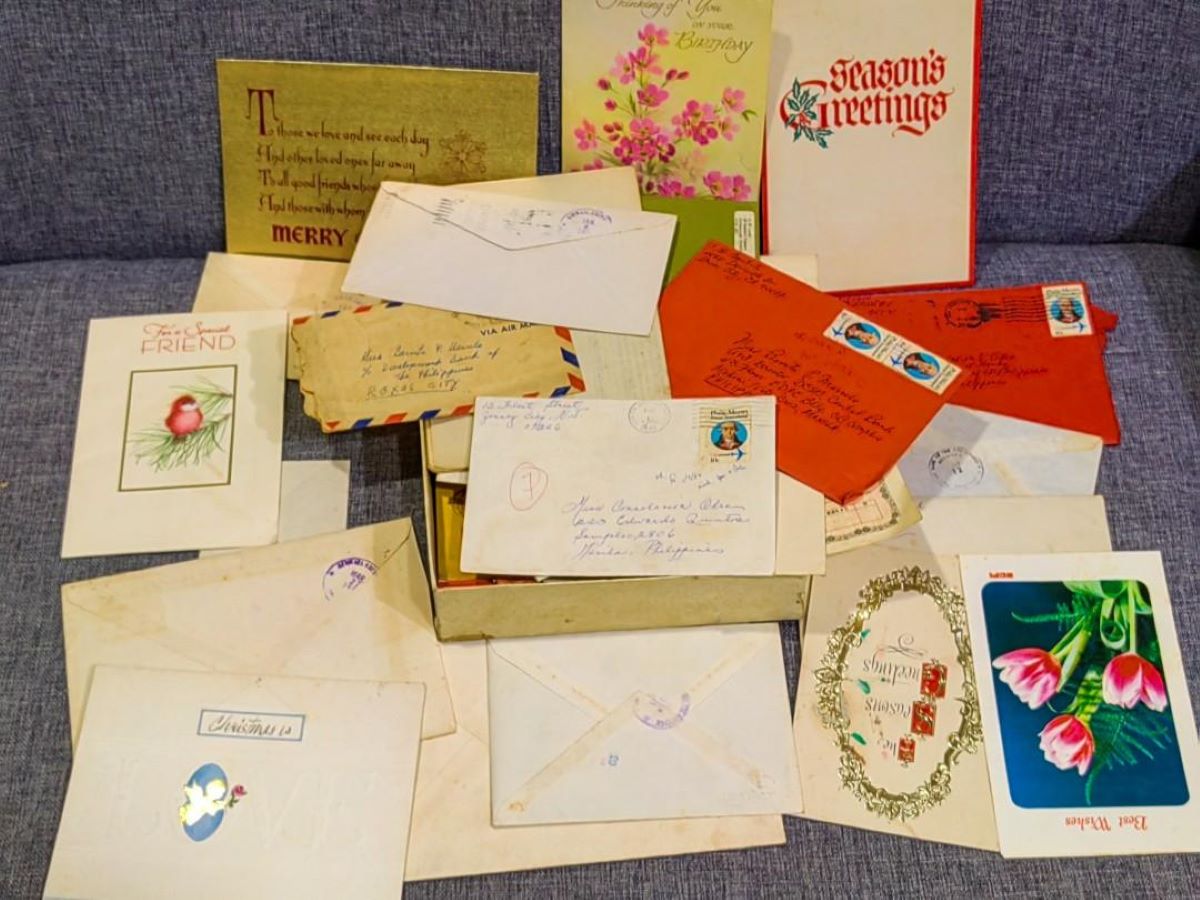


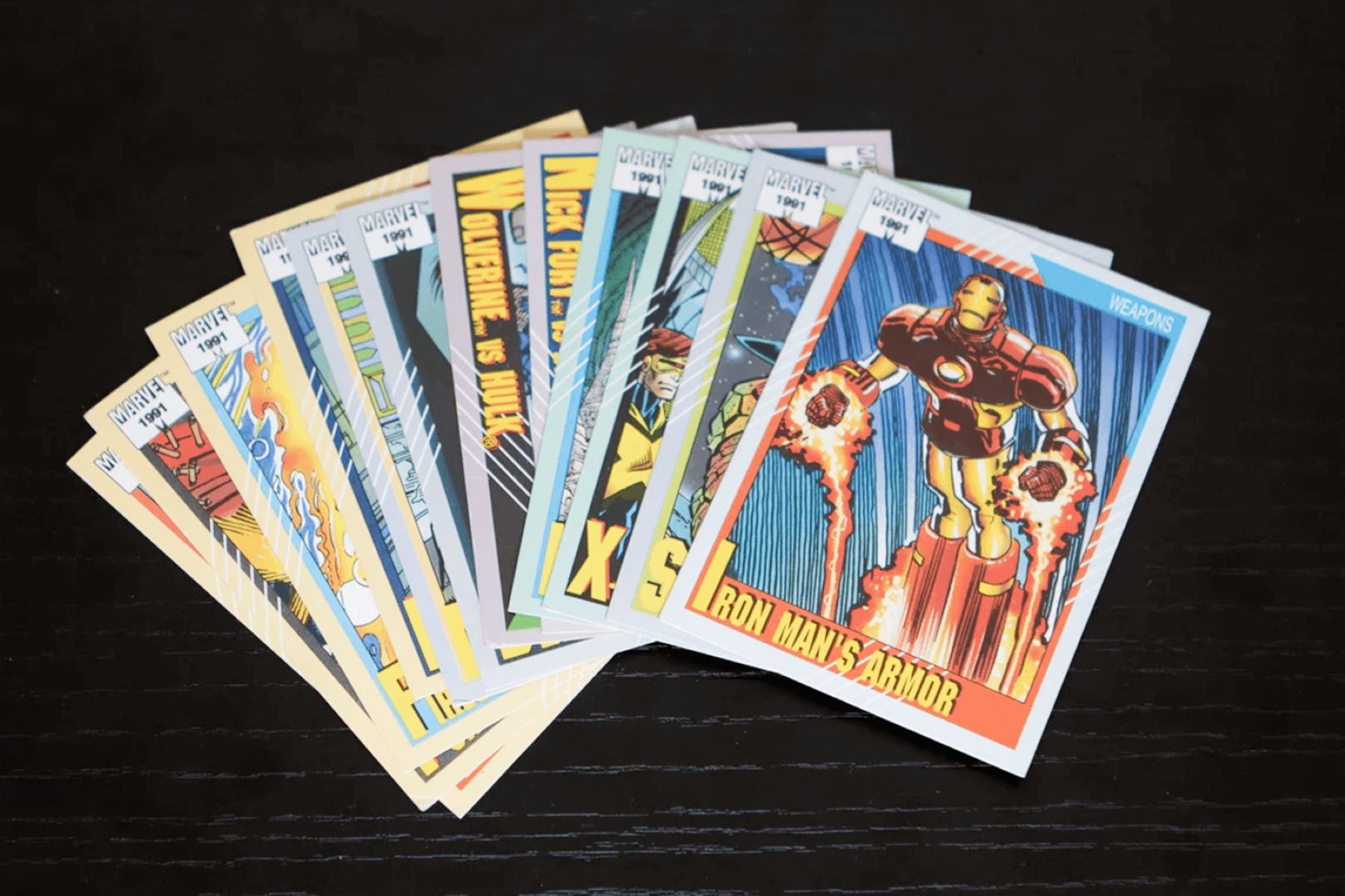
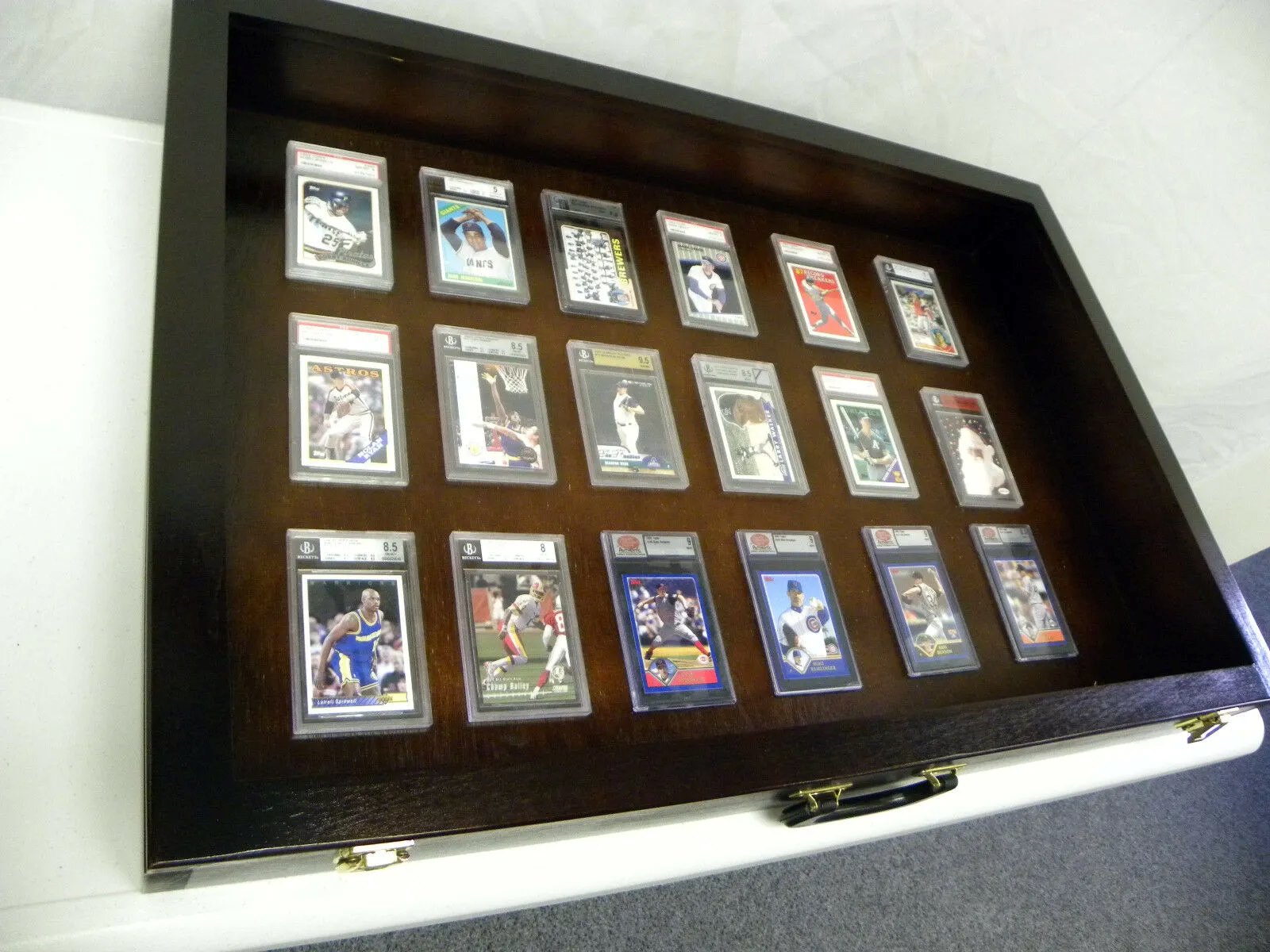
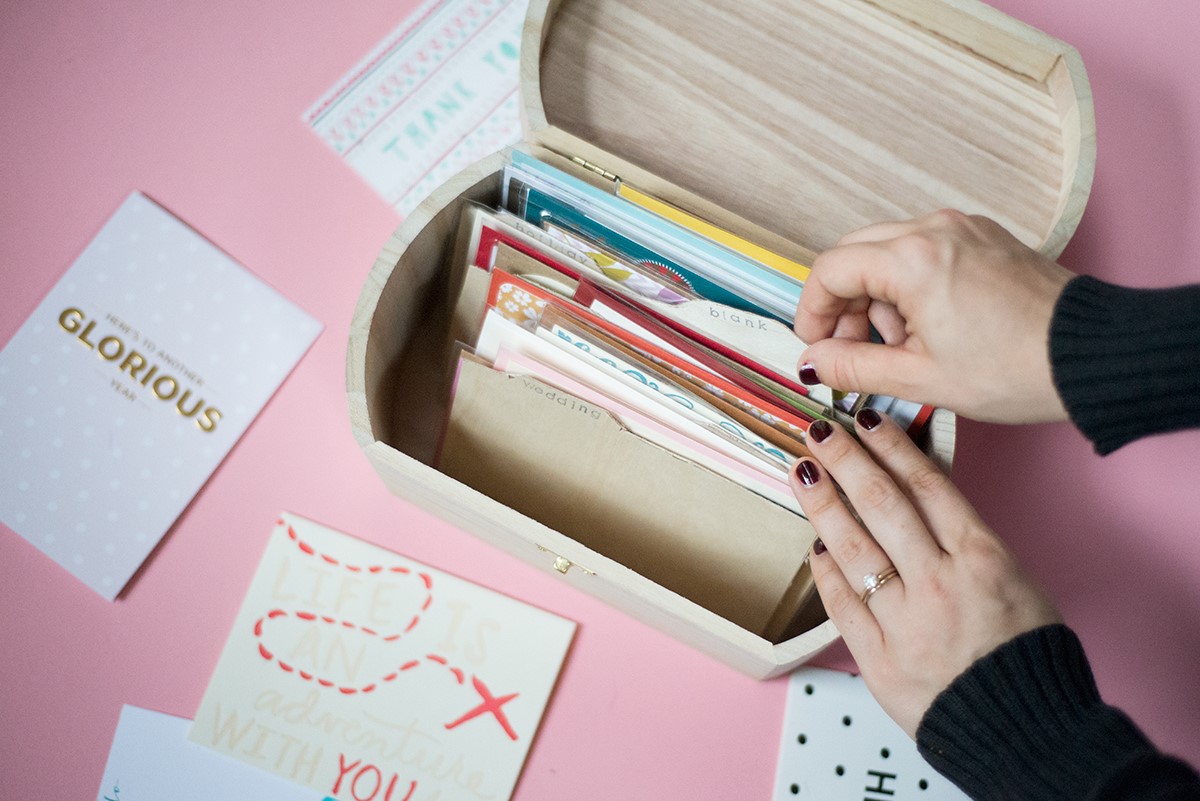
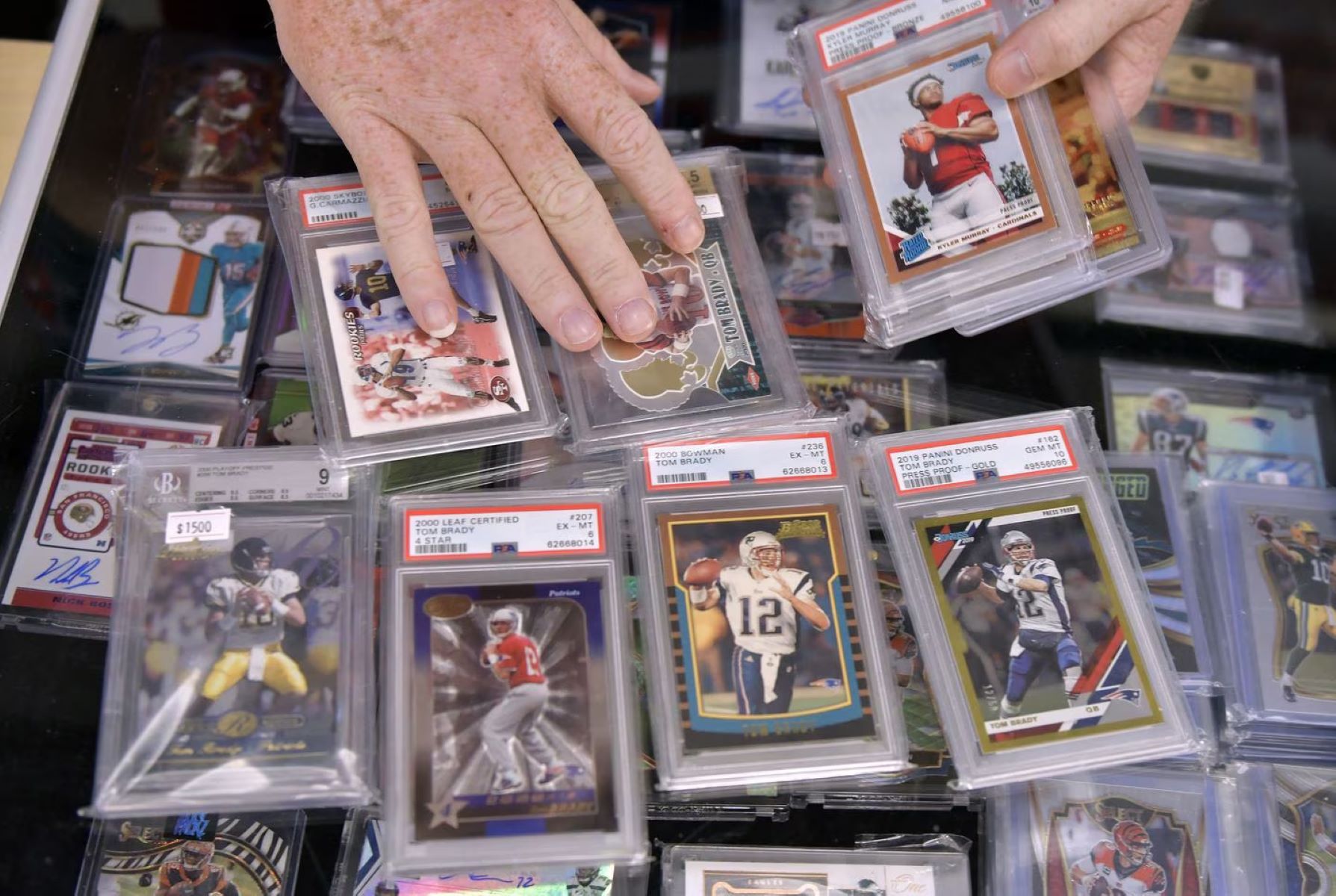
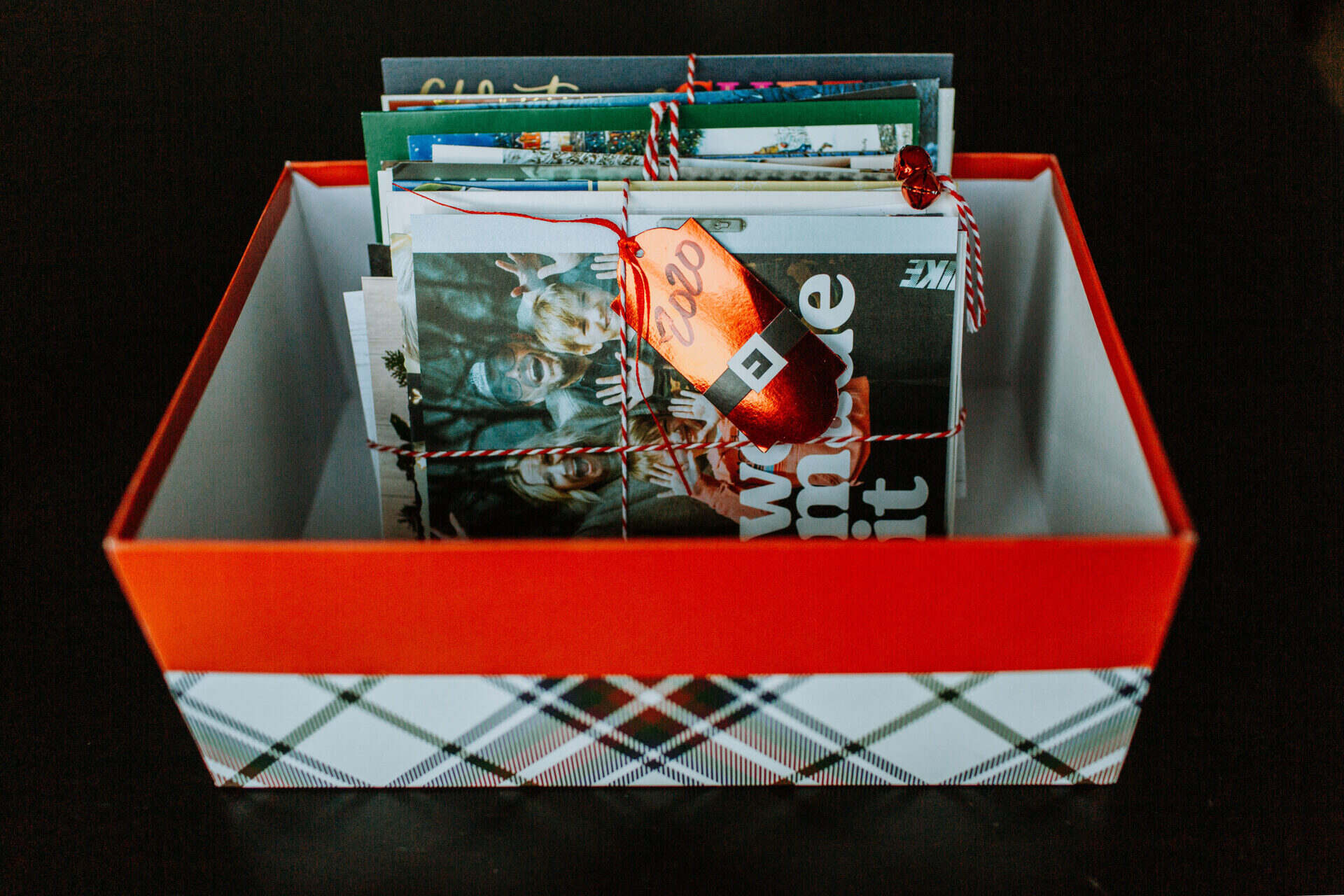
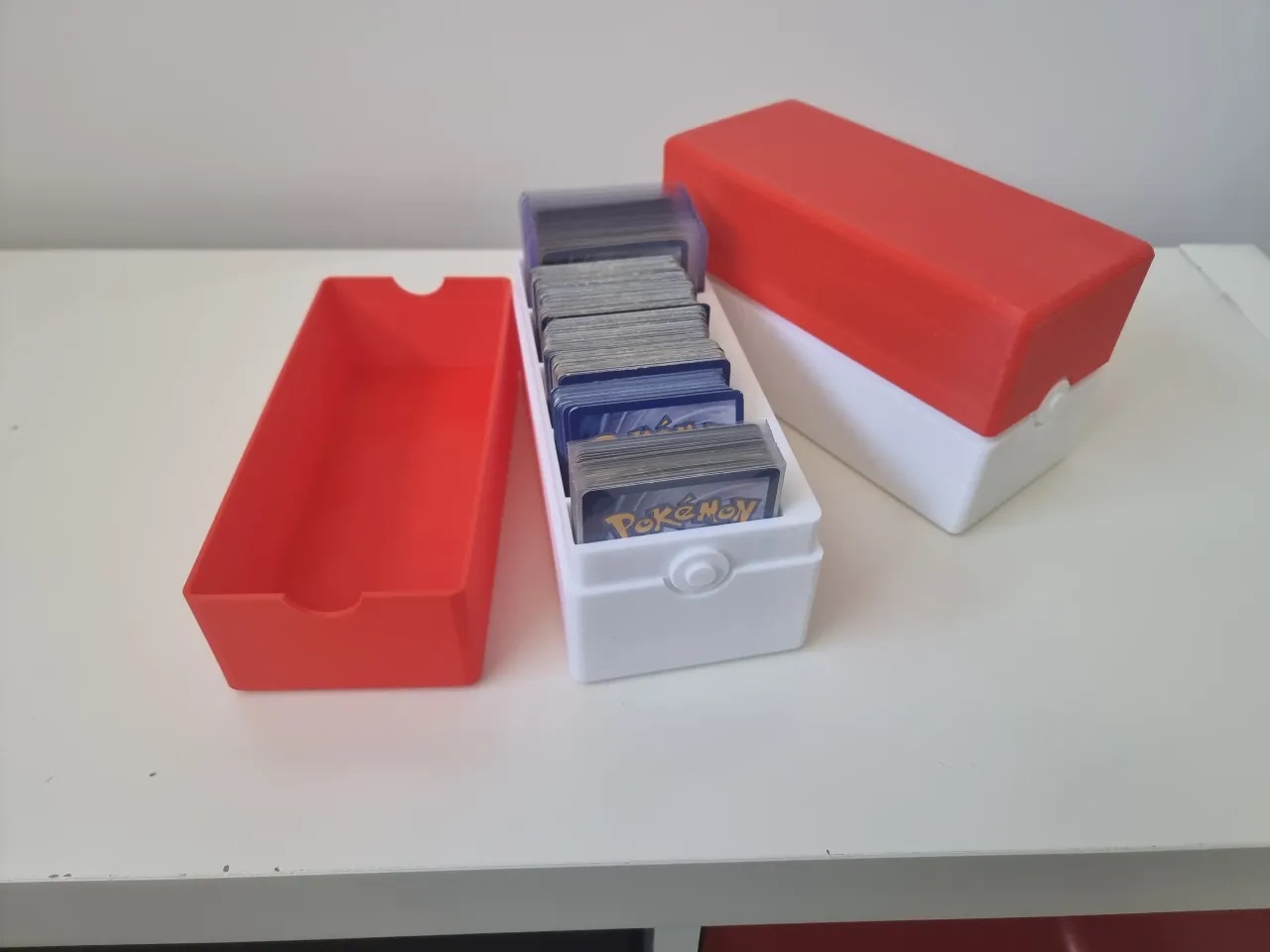
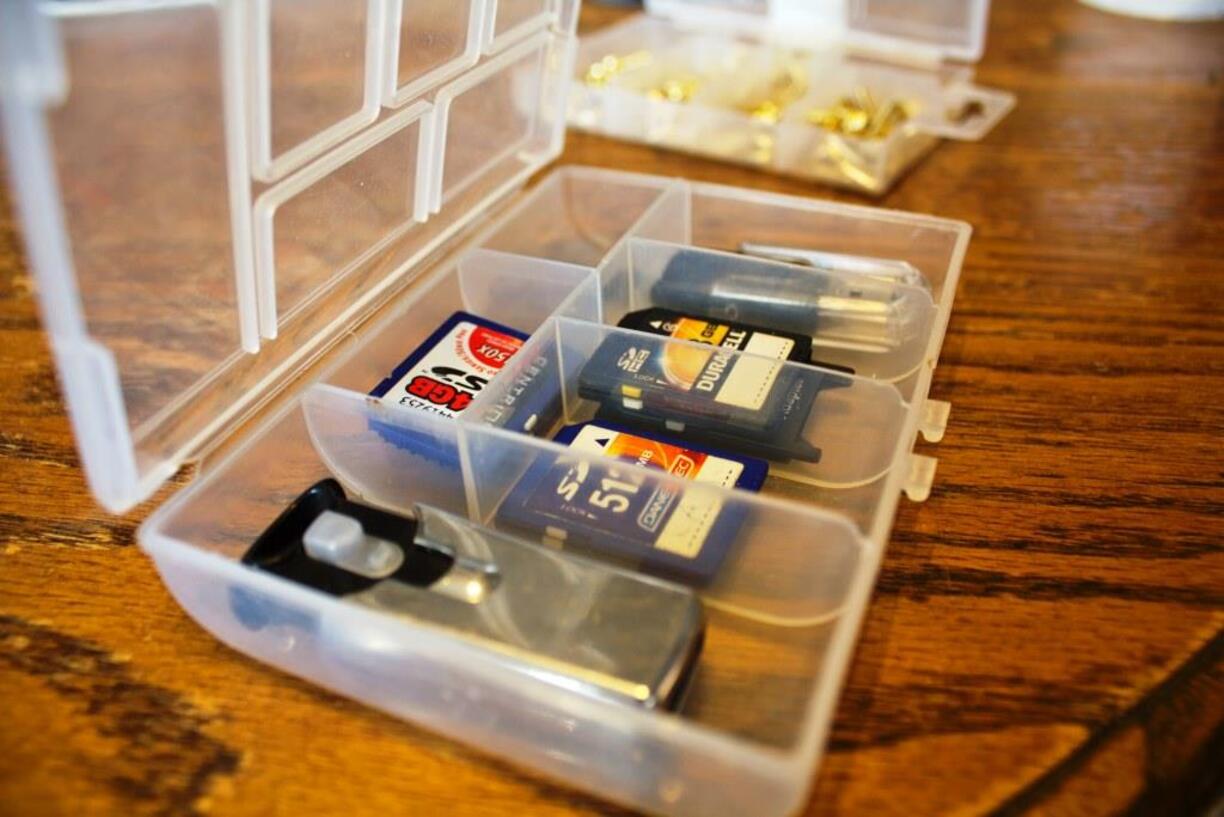

0 thoughts on “How To Store Old Cards”